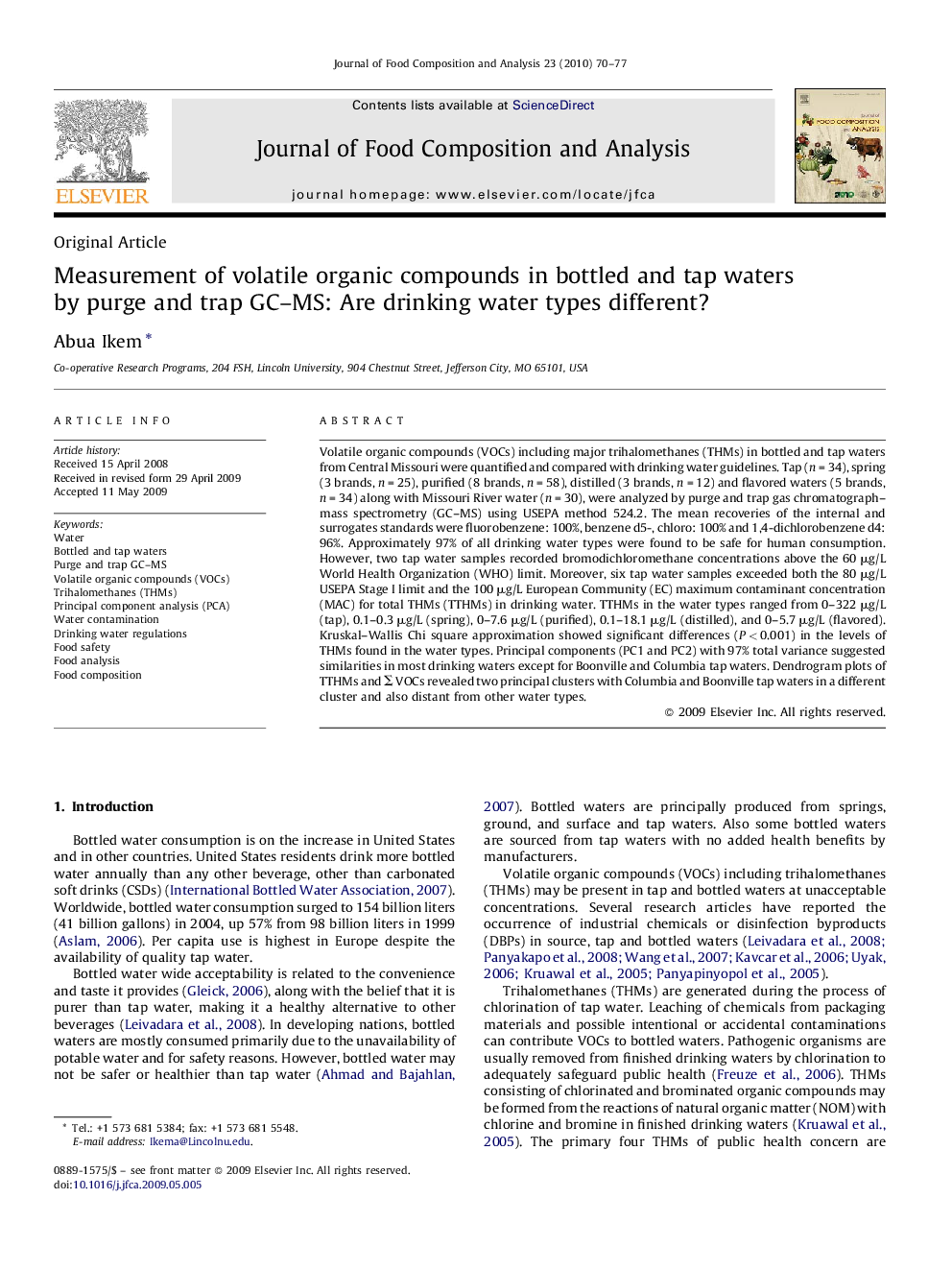| Article ID | Journal | Published Year | Pages | File Type |
|---|---|---|---|---|
| 1218766 | Journal of Food Composition and Analysis | 2010 | 8 Pages |
Volatile organic compounds (VOCs) including major trihalomethanes (THMs) in bottled and tap waters from Central Missouri were quantified and compared with drinking water guidelines. Tap (n = 34), spring (3 brands, n = 25), purified (8 brands, n = 58), distilled (3 brands, n = 12) and flavored waters (5 brands, n = 34) along with Missouri River water (n = 30), were analyzed by purge and trap gas chromatograph–mass spectrometry (GC–MS) using USEPA method 524.2. The mean recoveries of the internal and surrogates standards were fluorobenzene: 100%, benzene d5-, chloro: 100% and 1,4-dichlorobenzene d4: 96%. Approximately 97% of all drinking water types were found to be safe for human consumption. However, two tap water samples recorded bromodichloromethane concentrations above the 60 μg/L World Health Organization (WHO) limit. Moreover, six tap water samples exceeded both the 80 μg/L USEPA Stage I limit and the 100 μg/L European Community (EC) maximum contaminant concentration (MAC) for total THMs (TTHMs) in drinking water. TTHMs in the water types ranged from 0–322 μg/L (tap), 0.1–0.3 μg/L (spring), 0–7.6 μg/L (purified), 0.1–18.1 μg/L (distilled), and 0–5.7 μg/L (flavored). Kruskal–Wallis Chi square approximation showed significant differences (P < 0.001) in the levels of THMs found in the water types. Principal components (PC1 and PC2) with 97% total variance suggested similarities in most drinking waters except for Boonville and Columbia tap waters. Dendrogram plots of TTHMs and Σ VOCs revealed two principal clusters with Columbia and Boonville tap waters in a different cluster and also distant from other water types.
